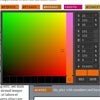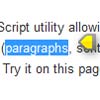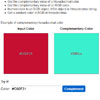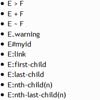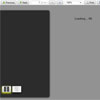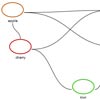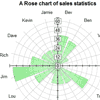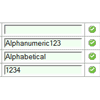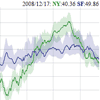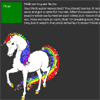#MotionDetector.js
##Demos and examples
Colormotion
Sensitive particles(Refactored now)
##Important note! Before calling the update function in the first time, set some delay, it prevents NS_ERROR_NOT_AVAILABLE in Firefox.
var animate = function(){ motionDetector.update(); requestAnimFrame(animate); }; setTimeout(function () { animate(); }, 3000);##Using
###Creating an object
To start working you need to create a motion detector object:
var md = new MotionDetector(document.getElementById('video'), document.getElementById('output'));Here you are calling the constructor with 2 parameters: HTML5VideoObject for an input stream and HTML5 Canvas Object for drawing processed data. Second parameter is not required.
###Update
On each frame you need to update a motion detector, which captures current picture of a frame, compares with a last and draws a motion data into output canvas element.
md.update();By default picture of motions will be black and white. White pixel - motion was, black pixel - no motion.
###setColor method
You can easily add a color to a motion picture with a help of a setColor method, which takes 2 parameteres. First parameter is a color of pixel, where motion was. Second parameter is a color of pixel, where motion wasn't.
Example:
//color of pixel where motion was var differenceRGBA = { r: 255, g: 0, b: 0, a: 0.5 } //color of pixel where motion wasn't var similarityRGBA = { r: 0, g: 0, b: 0, a: 1 } md.setColor(differenceRGBA, similarityRGBA);If you want to set more than just a color, use onDifference and onSimilarity handlers, you can read about it below.
###onDifference handler
Handle a motion in each pixel. Motion detector calls this handler with two parameters: first - context of output canvas element, second - coordinates of the pixel.
Example:
md.onDifference = function(blendedCtx, e){ blendedCtx.save(); blendedCtx.fillStyle = '#ff0000'; blendedCtx.beginPath(); blendedCtx.arc(e.x, e.y, 10, 2 * Math.PI, false); blendedCtx.closePath(); blendedCtx.fill(); blendedCtx.restore(); };###onSimilarity handler
Handle an inaction in each pixel. Motion detector calls this handler with two parameters: first - context of output canvas element, second - coordinates of the pixel.
Example:
md.onSimilarity = function(blendedCtx, e){ blendedCtx.save(); blendedCtx.fillStyle = '#000000'; blendedCtx.fillRect(e.x, e.y, 1, 1); blendedCtx.restore(); };###onUpdate handler
By default motion detector on each update clears a canvas by calling a clearRect method. You can set a motion detector behavior on each update to your notice.
Example:
md.onUpdate = function(ctx){ ctx.fillStyle = 'rgba(180, 180, 180, 0.1)'; ctx.fillRect(0, 0, ctx.canvas.width, ctx.canvas.height); };###checkArea method
Check a rectangle area for a motion.
md.checkArea(x, y, width, height [, step of checking]);Example:
if(md.checkArea(0, 0, 50, 50)){ alert('Motion!'); }###getMotionAverage method
Return a motion average of a rectangle area.
Example(same as example of a checkArea method):
if(md.getMotionAverage(0, 0, 50, 50) > 100){ alert('Motion!'); }###getBlended method
To get an image object of a non-colored motion data, call 'getBlended' method.
md.getBlended();

